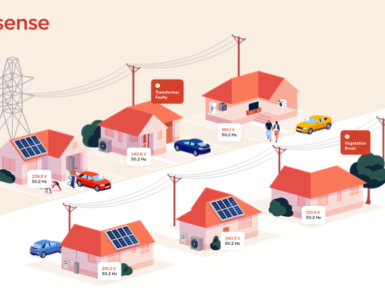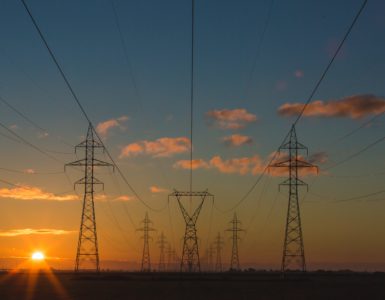How load disaggregation and grid edge intelligence on smart meters can deliver a cost effective energy transition for customers and the climate.
Grid edge intelligence and appliance level load disaggregation are generating huge interest in the energy sector. Advances in technology and AI mean that this long heralded technology is now a compelling proposition. Testament to its potential, Sense has recently closed the biggest funding round yet in the sector – a $123m Series C. With millions of next generation smart meters due to roll out with this capability in North America, decision makers in Europe are now giving the technology serious consideration for imminent rollouts.
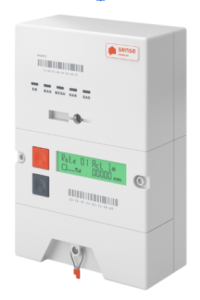
The benefits to consumers are clear. It represents a powerful tool for reducing both their energy bills and their carbon footprint. However, it is the benefits to the energy system as a whole that are particularly important.
For vertically integrated utilities this is of particular significance.
For managing the low voltage grid, it offers a whole new set of tools to manage demand and reduce operating costs. Whilst it also has the potential to transform the supply side of the business. With these advances, reducing both costs and carbon has become a tantalising possibility.
So how does Sense intelligence work?
By analysing high resolution energy data, Sense’s AI software is able to spot patterns and anomalies in the voltage and current. Sense doesn’t make meters, but we do develop intelligent machine learning software that runs within third party next generation smart meters.
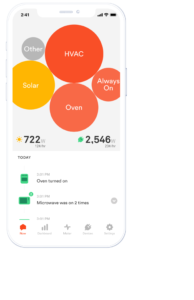
Its pattern recognition capability can be used to identify the unique power signatures of different devices in the home and determine how much power they are using in both historic and real time. Device detection and two-way communications are shared with the consumer via an app. It can also be used to spot faults on the grid or in the home. No other hardware or smart connections are required.
This high resolution processing takes place in the meter itself at the grid edge, so cloud costs and latency are low. Granular insights can be issued on demand into Retailer and Network backend systems.
Reduce energy bills with engaged, satisfied consumers
The Sense app is a powerful way to reduce domestic energy costs and consumption. It does this by providing consumers with an innovative new technology – at no charge – that is able to identify how much consumption individual appliances are using. People can see instantly whether they’ve left an energy-hungry heater on, identify an old, inefficient water boiler, or understand the behaviours contributing to big energy bills. Energy consumption is broken down to individual appliances in the home, with instant feedback when it’s turned on or off. With this insight, users find it easy to reduce their consumption. On average they save 9% on their bill – about $150 a year in Australia. With the marginal cost of software being so low, Sense is the most cost effective energy efficiency investment available today – more cost effective than insulation, a new thermostat, new boiler, solar panels…anything.
Householders stay engaged too so the benefits are enduring. They benefit from a range of home awareness tools. They can get custom notifications to make their lives simpler and safer. Did they forget to turn the iron off? Is someone at home? Is the air conditioning or clothes dryer faulty? Is there even a dangerous wiring fault in the home? All of this is enabled by AI analysis of electrical supply into the home. As a result, a typical householder opens the Sense app two to three times a week, even after a year of usage. With all this additional value, consumer satisfaction soars. The relationship between energy companies and customers transforms from cynicism to genuine appreciation.
Reduce overall power and network costs with domestic demand response at scale
Managing the grid is going to become extraordinarily challenging in the coming years. The electrification of heat and transport will trigger a surge in load. A grid dependent on renewables will be unable to dispatch sufficient supply to balance it. The spikes in demand will exacerbate peak pricing. There will be severe operational challenges when additional infrastructure can’t be deployed fast enough to mitigate congestion. Involuntary curtailment will prompt a consumer backlash, and limits to the deployment of EV charge points will be unpopular with a growing cadre of drivers. Power companies that are able to limit consumption during those peak times will reduce their costs, reward consumers with incentives, and lower bills for all. However, most domestic flexibility solutions in the market today are prohibitively expensive and difficult to scale. They require the installation of connected batteries or other appliances. Time of use tariffs have poor uptake and customers struggle to cut enough consumption at the right times. However, with an engaged and informed cohort of customers, flexibility can be secured at much greater scale and significantly lower cost.
Sense enables a different type of domestic demand side response that doesn’t rely on expensive in-home installations. Using real-time device detection, Sense can detect the highest consuming appliances on the grid at any time, and issue messages to consumers requesting they turn down specific devices. The same technology makes time of use tariffs much more effective. Immediately before a change in pricing, consumers can be messaged with a reminder and provided with suggestions on the precise appliances they should consider turning down. The flexibility and immediacy means even dynamic time of use tariffs become viable.
One clarification: the load disaggregation must be accurate, real time and appliance level. Other load disaggregation technologies using lower resolution data have been shown to be too unreliable, late and clumsy to be effective. If the disaggregation insight is delivered 24 hours late or at a category level (e.g. heat), that’s no use for flexibility.
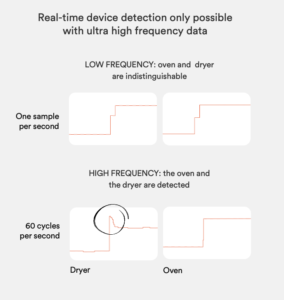
However, if the disaggregation is real time, householders are then able to turn off the most impactful appliances that are using power at that moment. They don’t waste time and effort on minor appliances, such as laptops or low energy light bulbs. Customers retain agency and choice, so the threat of a damaging backlash against the industry is removed. By doing the hard work for them, participation rates and flexible load increase substantially. When homes without Sense are asked to shift demand, an average of just 2-4% of peak consumption is typical. In homes equipped with Sense, this soars to 18%.
Crucially, this form of domestic flexibility requires only a software application on next generation meters. The software can be affordably rolled out, downloaded on a new meter, and distributed to an entire customer base with minimal marginal cost. Once at a reasonable scale, load under control becomes predictable and reliable. For a medium sized country such as Taiwan, Sense on smart meters would be the equivalent of adding 2.7GW to peak capacity. That’s as much as two nuclear power stations!
Grid Edge Intelligence can help reduce other system costs, further reducing bills
Maintenance costs for grid operators can be cut. The machine learning software is able to lock on to and locate anomalies in the power supply. Problems as diverse as vegetation brush, corroding transformers, and floating neutrals can be identified, located and the grid operator notified. This can transform the maintenance programme for network operators from time to condition based. Rather than send engineers and maintenance crews to look for faults on a regular schedule, they can be directed to the source of known issues. This reduces truck rolls and costs. The location of failures can be identified rapidly, reducing time to fix, improving customer satisfaction, and ultimately lowering bills.
Real time insight can improve decision making and forecasting at the grid edge.
With enhanced processing within the smart meter, grid operators can receive an on-demand feed of voltage, waveform, and frequency with a granularity previously only seen at the substation level. With greater penetration of distributed generation and heavy loads, this meter level insight will be a vital tool for managing the grid. Sudden dips and peaks in solar generation as a cloud passes will be visible, allowing the grid to respond with demand response. A wave of EVs being charged simultaneously can be seen and reacted to. Clarity over EV or heat pump penetration will help finesse decisions on where to invest in additional infrastructure.
The supply side can also derive significant benefits. The most direct advantage is enhanced forecasting. By supplementing demand forecasting models with appliance level insight, future load can be more accurately predicted. Power purchasing can be finessed and hedges optimised. With more accurate buying, supply margins can expand.
The same appliance level insight can be used to better understand customers and their needs. Service and support can be enhanced with richer customer segmentation and insights.
Creation of new revenue streams, clear competitive advantage and the requisite capabilities to excel
As part of this proposition, consumers are asked to share specific energy data with the utility. Their permission is sought in a GDPR-compliant, clear and transparent manner with the broader benefits of doing so laid out. Personally identifiable information (PII) is held separately from their energy data, with the highest security standards applied. Consumer data is not shared with any third parties without the express permission of the customer, and only in circumstances which are to the benefit of them and the energy transition.
However, once approval is acquired, new business models can be created. If the customer consents to share their appliance and fault data, utilities can offer new proactive services. They can offer to repair or replace a faulty appliance before it breaks. They can identify older, energy inefficient appliances and sell more environmentally friendly replacements, helping customers save money on their bills. By identifying and pre-empting risk in the home, insurance can be made more price competitive.
Energy suppliers have always been in the data business. That data may have been analogue rather than digital, collected by an army of meter readers, processed, and then billed back to consumers. Their advantages lay in data collection and processing, anchored to a unique metered asset in the home, and the infrastructure and relationships to communicate with millions of consumers. These new business lines leverage those core capabilities. Unlike many diversified lines of business, energy suppliers have genuine competitive advantages in these new services, and are therefore much more likely to generate material and sustained margins.
Concluding thoughts – a call to action
The real time and historical load disaggregation technology developed by Sense can have a huge impact both on the size of consumers bills but also the underlying costs of running the energy system.
Crucially this technology can be rolled out at scale as software on smart meters, in a highly cost effective way. When a smart meter is installed, the incremental cost of this capability is negligible.
For utilities considering a new or replacement rollout of smart meters, this is a moment of opportunity. By specifying next generation meters with the capacity to run Sense-like software, they can accelerate the energy transition and transform their relationship with consumers.
To discuss how to bring Sense to your rollout, please contact international@sense.com
Sign up to our monthly newsletter for more Sense insights: Sign up





